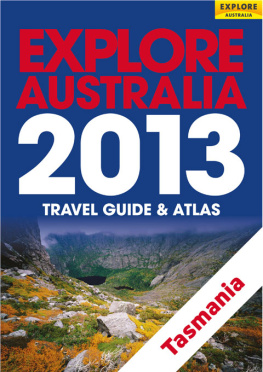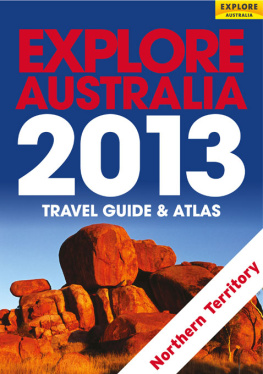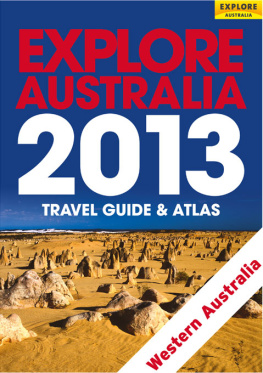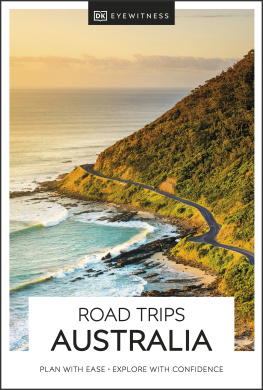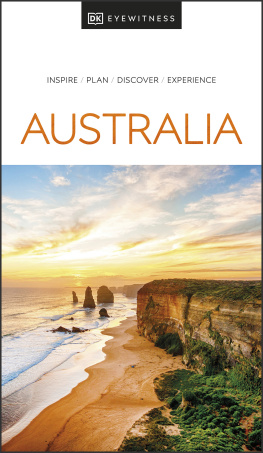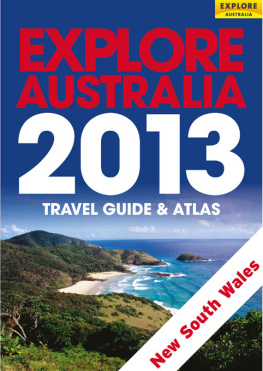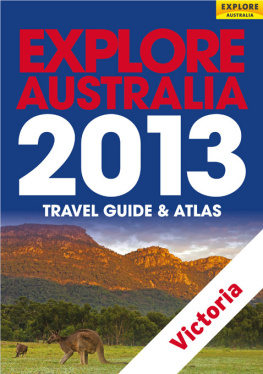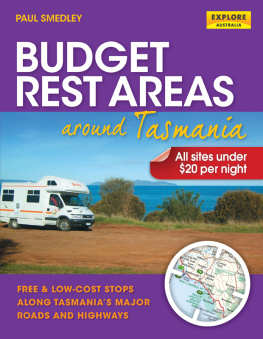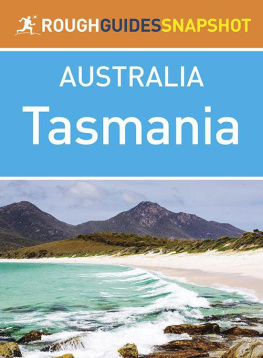
CONTENTS
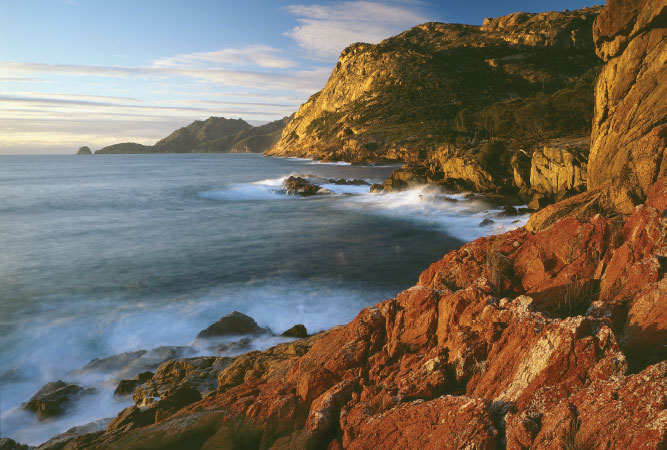
[ SLEEPY BAY, FREYCINET PENINSULA ]
TASMANIA is bursting with wonderful surprises. A winding country road can suddenly reveal a colonial village, a boutique vineyard or a breathtaking ocean view like that of Wineglass Bay. From landscapes and history to food and culture, Australias island state is a feast for travellers.
Although it is Australias smallest state only 296 kilometres from south to north and 315 kilometres east to west Tasmanias territory also includes the Bass Strait islands and subantarctic Macquarie Island. A population of just over 510 000 is eclipsed by over half a million visitors each year, and Tasmania is famous for its friendly, welcoming and relaxed pace of life.
Tasmanias Indigenous peoples have been here for around 35 000 years, and despite the terrible impact of white settlement, they are a large and increasingly influential community today. Middens are common around the coastline, showing where generations of Aboriginal people cooked shellfish meals.
Abel Tasman sighted and named Van Diemens Land in 1642, closely followed by French and British explorers. The British never keen to be outdone by the French acted in 1803 to establish a presence on the River Derwent. With the arrival of the British, white settlement got off to a rollicking and violent start as a penal colony for the first 50 years.
In more recent history, Tasmania is the home of the worlds first green political party. Local environmental politics captured international attention in the 1980s when the No Dams campaign saved the Franklin River from being flooded for a hydro-electric scheme.
The islands spirited cultural life includes the renowned Tasmanian Symphony Orchestra, David Walshs astounding MONA museum of old and new art, and a full diary of festivals.
Although two-thirds of the land is too harsh for farming, Tasmania has a growing reputation for boutique agriculture and aquaculture. A gastronomic circumnavigation of the island offers as much diversity as the landscape and a chance to discover Tasmanias cool-climate wines, fresh seafood, fruits and fine cheeses.

Population 510 600
Total land area 68 102 square kilometres
People per square kilometre 7.1
Sheep per square kilometre 49.6
Length of coastline 2833 kilometres
Number of islands 1000
Longest river South Esk River (252 kilometres)
Largest lake Lake Gordon (hydro-electric impoundment) (271 square kilometres)
Highest mountain Mount Ossa (1614 metres), Cradle MountainLake St Clair National Park
Coldest place At Liawenee in August the average minimum temperature is 1.8C
Longest place name Teebelebberrer Mennapeboneyer (Aboriginal name for Little Swanport River)
Best beach Wineglass Bay, Freycinet National Park
Biggest surfable wave Shipstern Bluff near Port Arthur
Tallest tree At 99.6 m, the Arve Valleys giant swamp gum Centurion is the worlds tallest eucalypt
Most famous son Ricky Ponting, former captain of the Australian cricket team
Most famous daughter Danish Crown Princess Mary Donaldson
Quirkiest festival National Penny Farthing Championships, Evandale
Most expensive gourmet produce Stigmas of Crocus sativus, grown on a saffron farm, which can attract a price of $30 000 per kilogram
Local beers Cascade in the south; Boags in the north
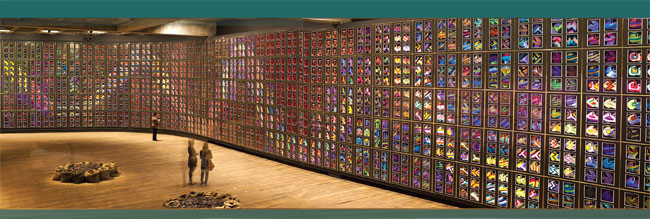
VISITOR INFORMATION
Tasmanian Travel and
Information Centre
Cnr Davey and Elizabeth sts
1800 990 440
www.discovertasmania.com
www.hobarttravelcentre.com.au
A t the southern tip of Australia, Hobart lies nestled between the slopes of Mount Wellington and the Derwent estuary. Hobart was founded at Sullivans Cove in 1804 on land known to its Aboriginal inhabitants as Nibberloonne. It was the second city after Sydney to be established, yet today Hobart is the smallest of the capitals with just 215 000 people enjoying its glorious location and unhurried, easy-going lifestyle.
Whaling and sealing brought wealth to the town in its early years, and the dockside was soon dotted with taverns doing a brisk trade among seafarers and traders. Hobarts fortunes still centre on its picturesque deep-water harbour, but now tourist ferries, Antarctic research vessels and luxury ocean liners moor alongside freighters and fishing trawlers.
Boasting internationally recognised temperate wilderness on its doorstep, Hobarts abundance of natural beauty propelled it to the forefront of environmental politics in 1972, becoming home to the worlds first green political party. It also has a cosmopolitan literary and arts culture that has now been propelled onto a world stage with the opening of the MONA museum. But for all that Hobart remains a small city with a laid-back friendly vibe.
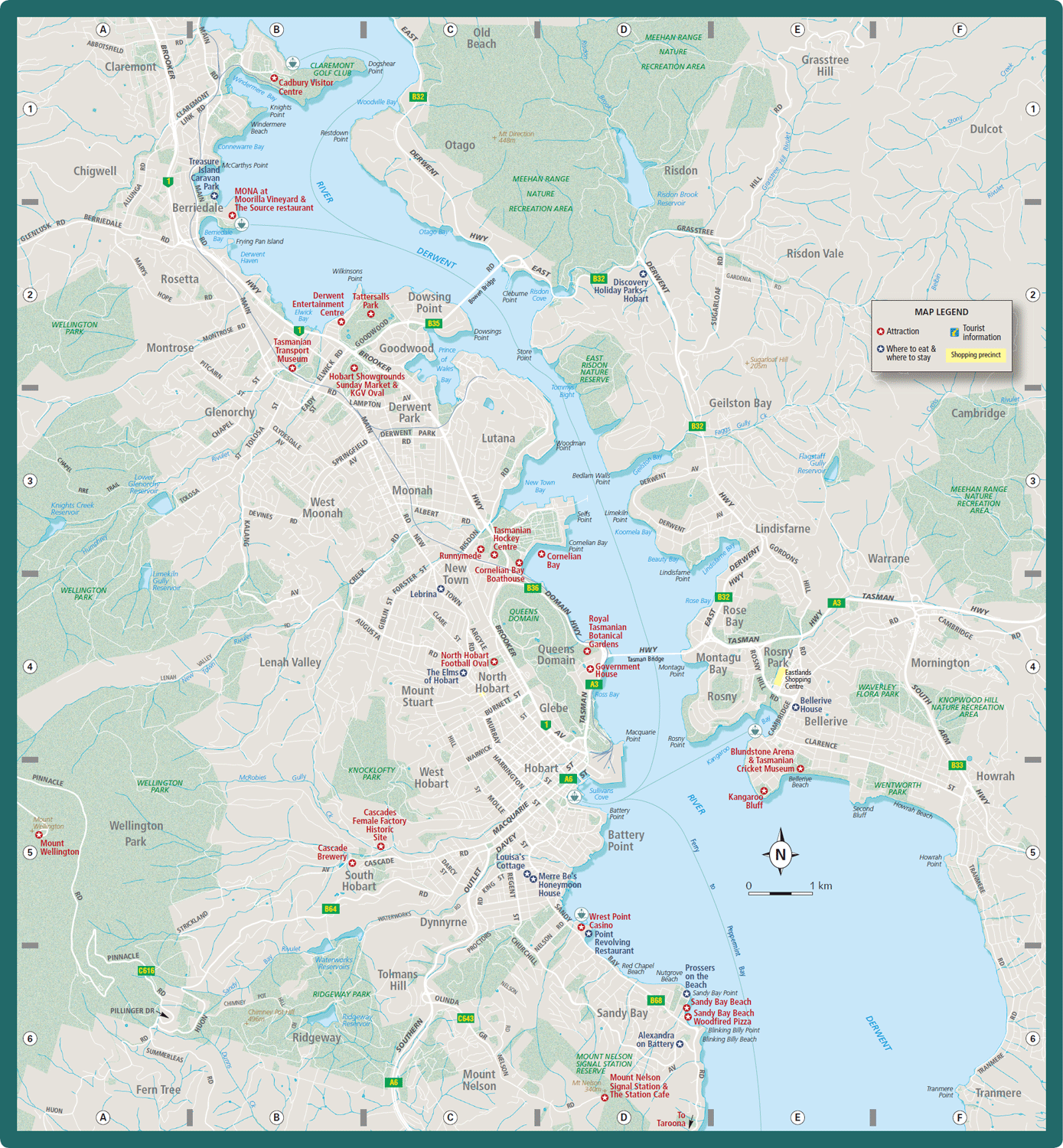
Downtown Hobart has fashion and department stores, specialty shops, banks, cafes and restaurants in the surrounding streets and arcades. Shops are open Monday to Saturday until 5pm, and on Sundays the larger stores open 10am to 4pm.
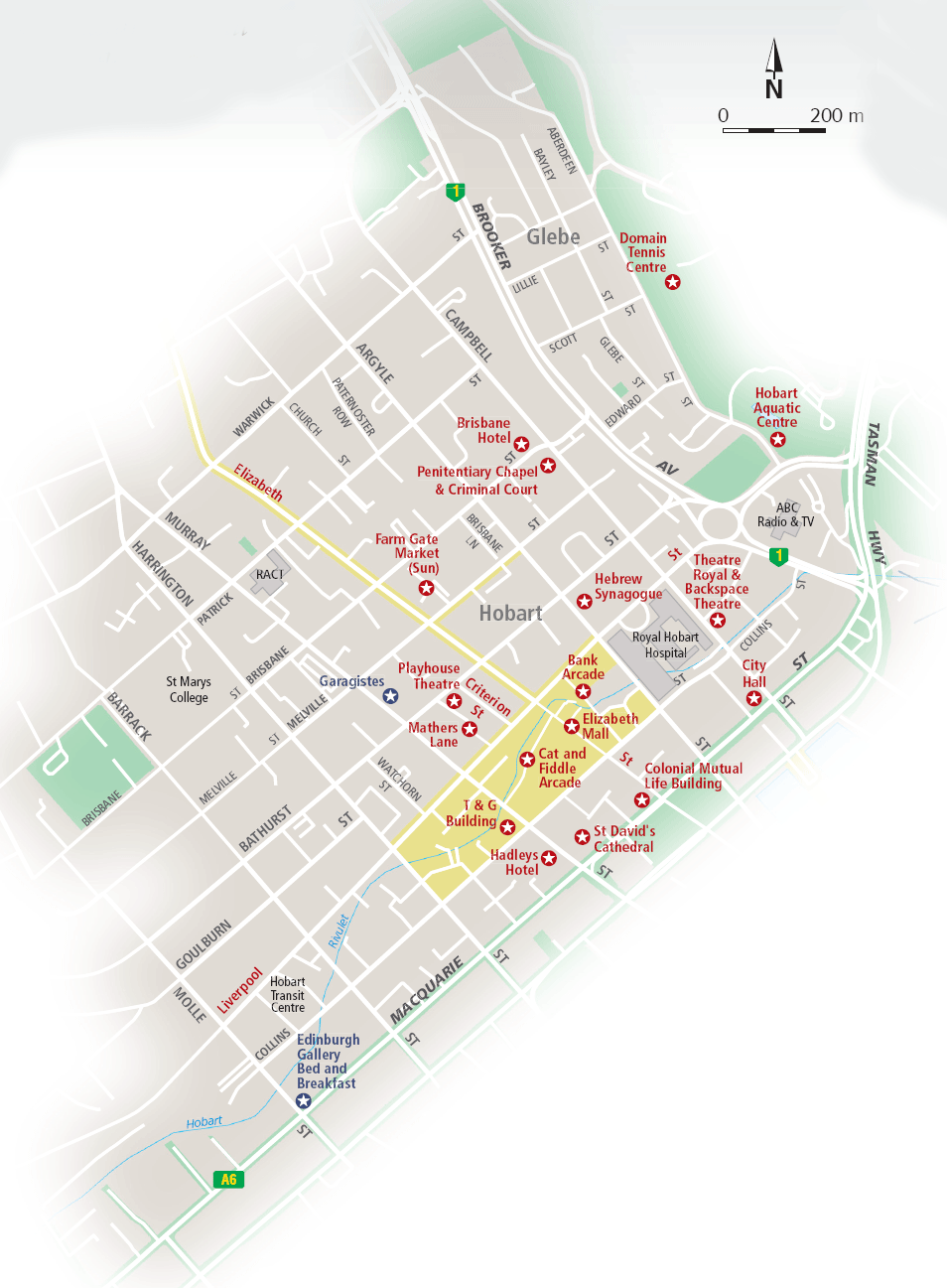
Elizabeth Mall
Surrounded by shops and cafes, the mall is a favourite with shoppers and buskers. An information booth is open weekdays until 4pm, and from 10am until 2pm on Saturdays.
Cat and Fiddle Arcade
Several shopping arcades are in the main retail area of Hobart, but the Cat and Fiddle Arcades nursery rhyme musical clock lends it a certain charm. The arcade runs between the Elizabeth Mall and Murray Street.
Liverpool Street
This is Hobarts main downtown shopping strip, with interesting arcades and side streets. Bank Arcade (between Argyle and Elizabeth streets) will tempt you with breads, spices and tiny cafes. Mathers Lane and Criterion Street are great for coffee and all things retro.
Elizabeth Street
Heading north from the mall, Elizabeth Streets outdoor-equipment stores give way to interesting cafes and collectibles shops.
The northern waterfront of Sullivans Cove is the busiest, smelliest and most fascinating part of the working dock. Along the Hunter Street waterfront contemporary apartments sit next to recycled 19th-century buildings, with Mount Wellington as the backdrop.
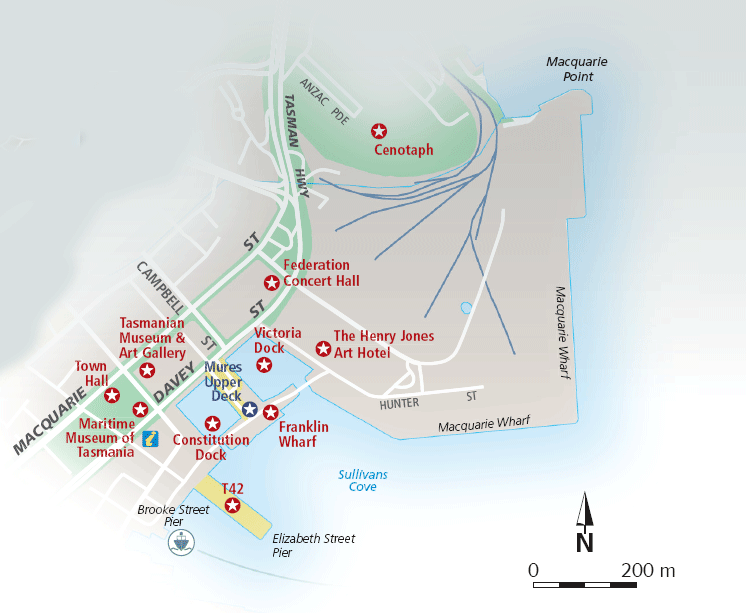
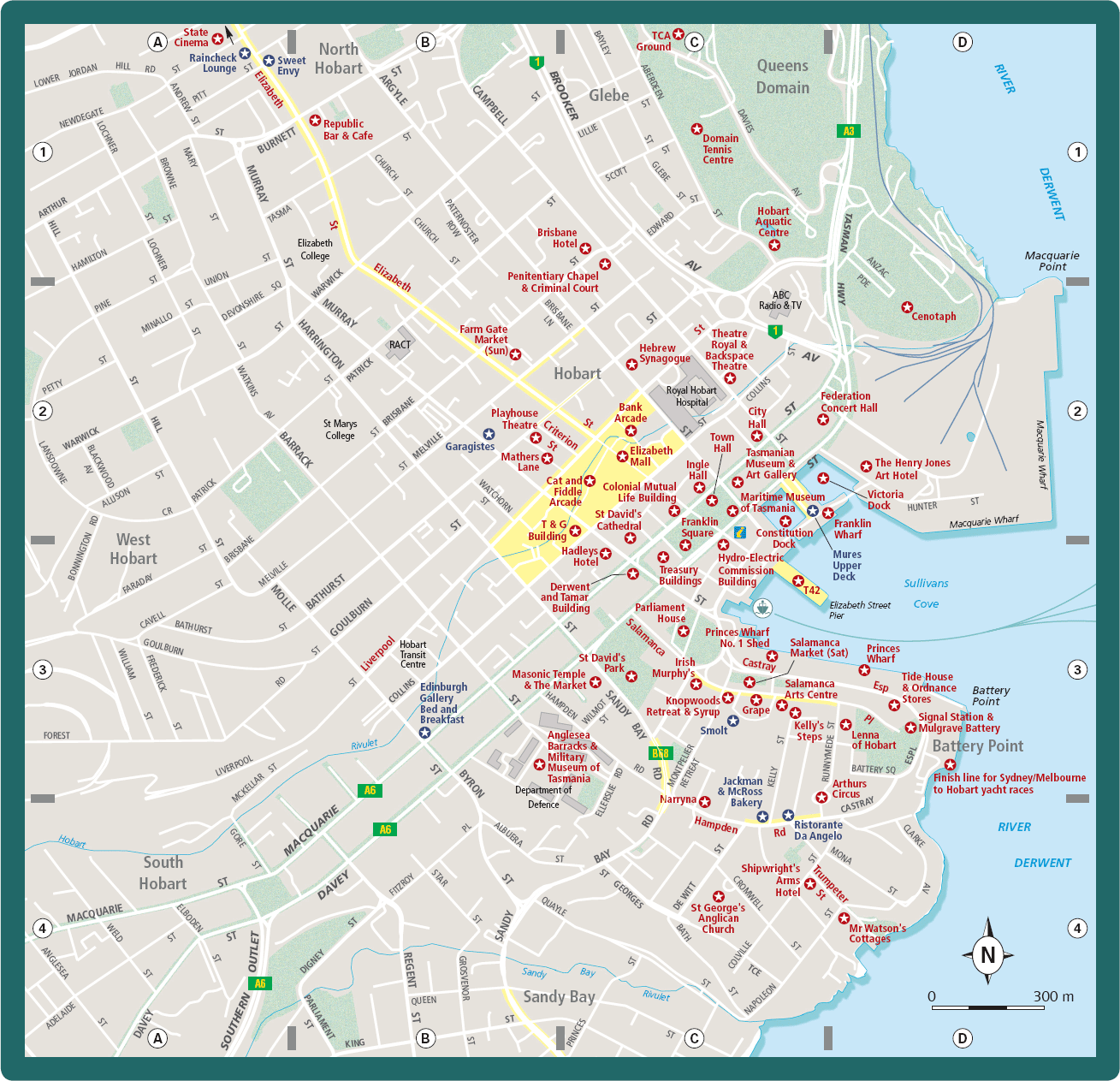
Constitution and Victoria docks
These docks are the heart of Sullivans Cove. Excellent seafood restaurants abound and dockside punts offer outstanding takeaway fish and chips. Every New Year, Constitution Dock comes alive when the annual Sydney and Melbourne to Hobart yachts cross the finish line. Every two years Franklin Wharf hosts the Australian Wooden Boat Festival, the largest gathering of historic craft in the Southern Hemisphere
Next page
